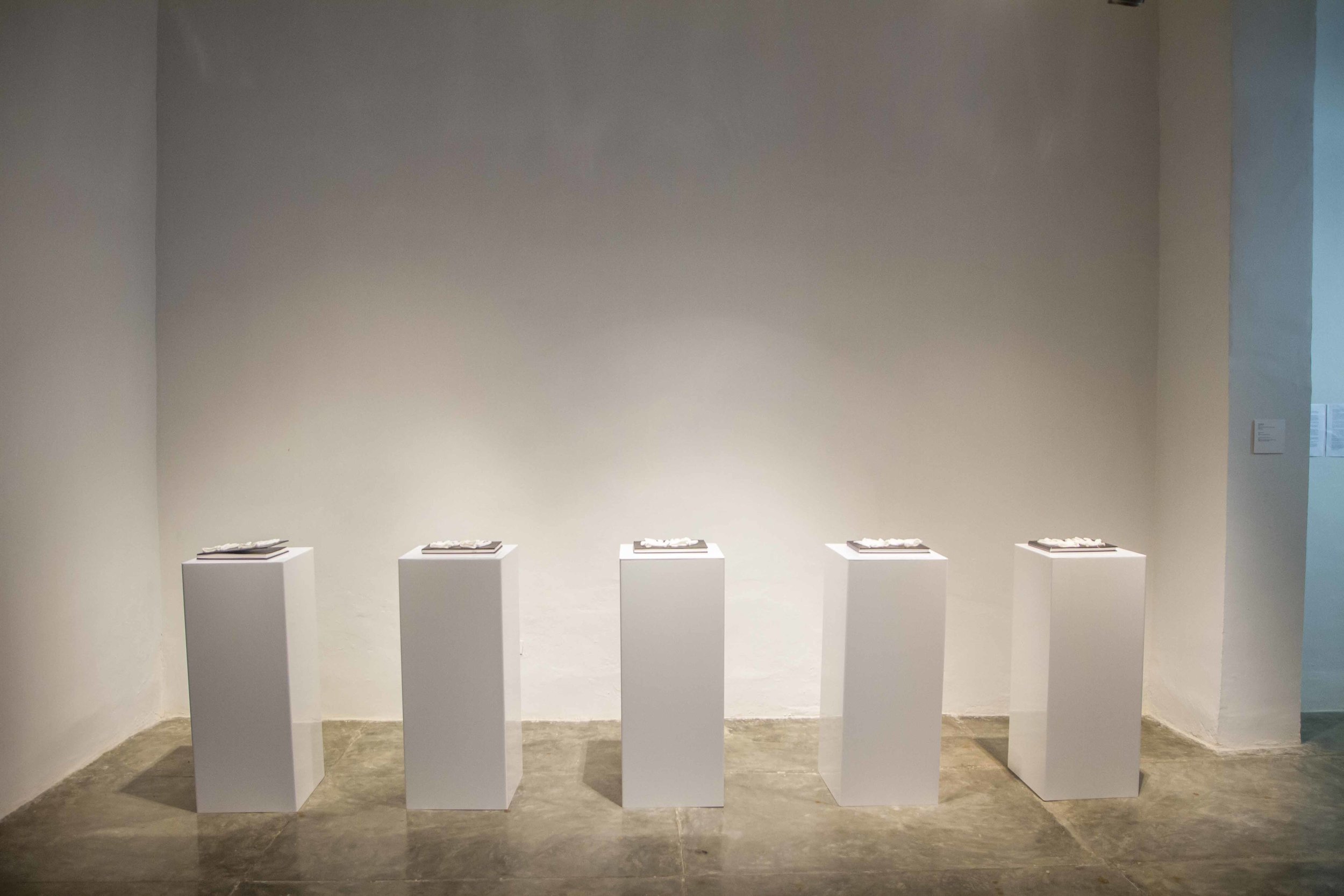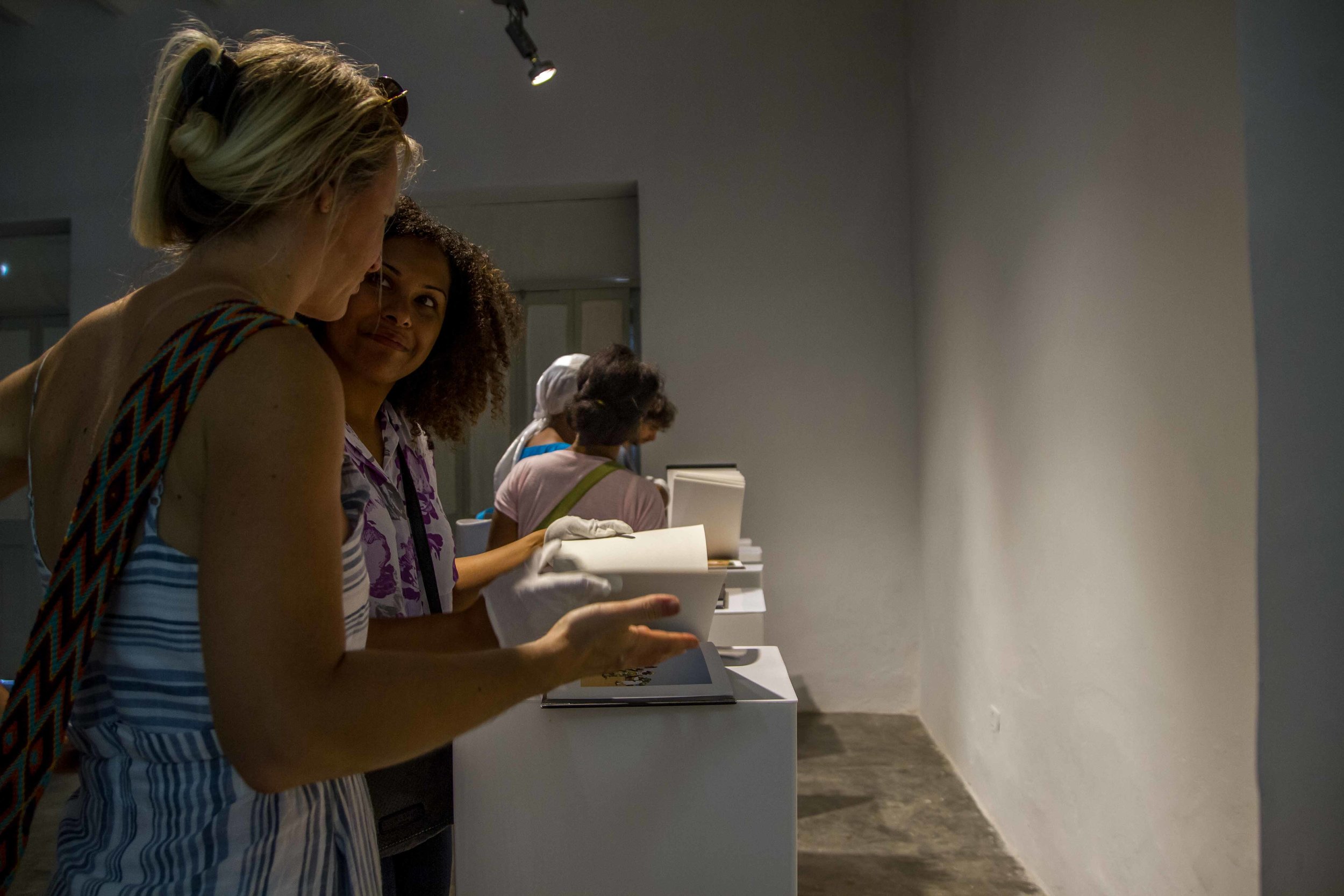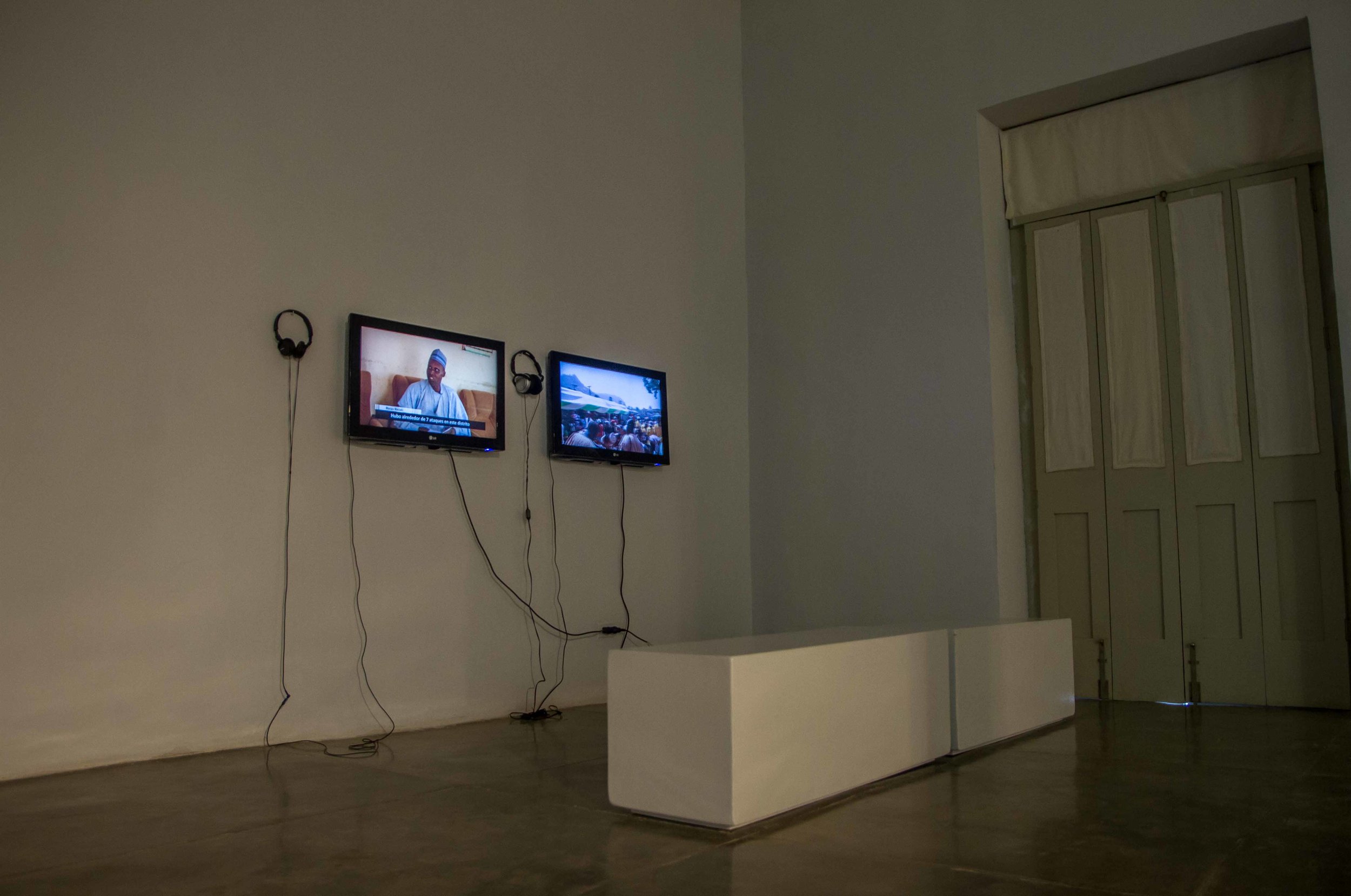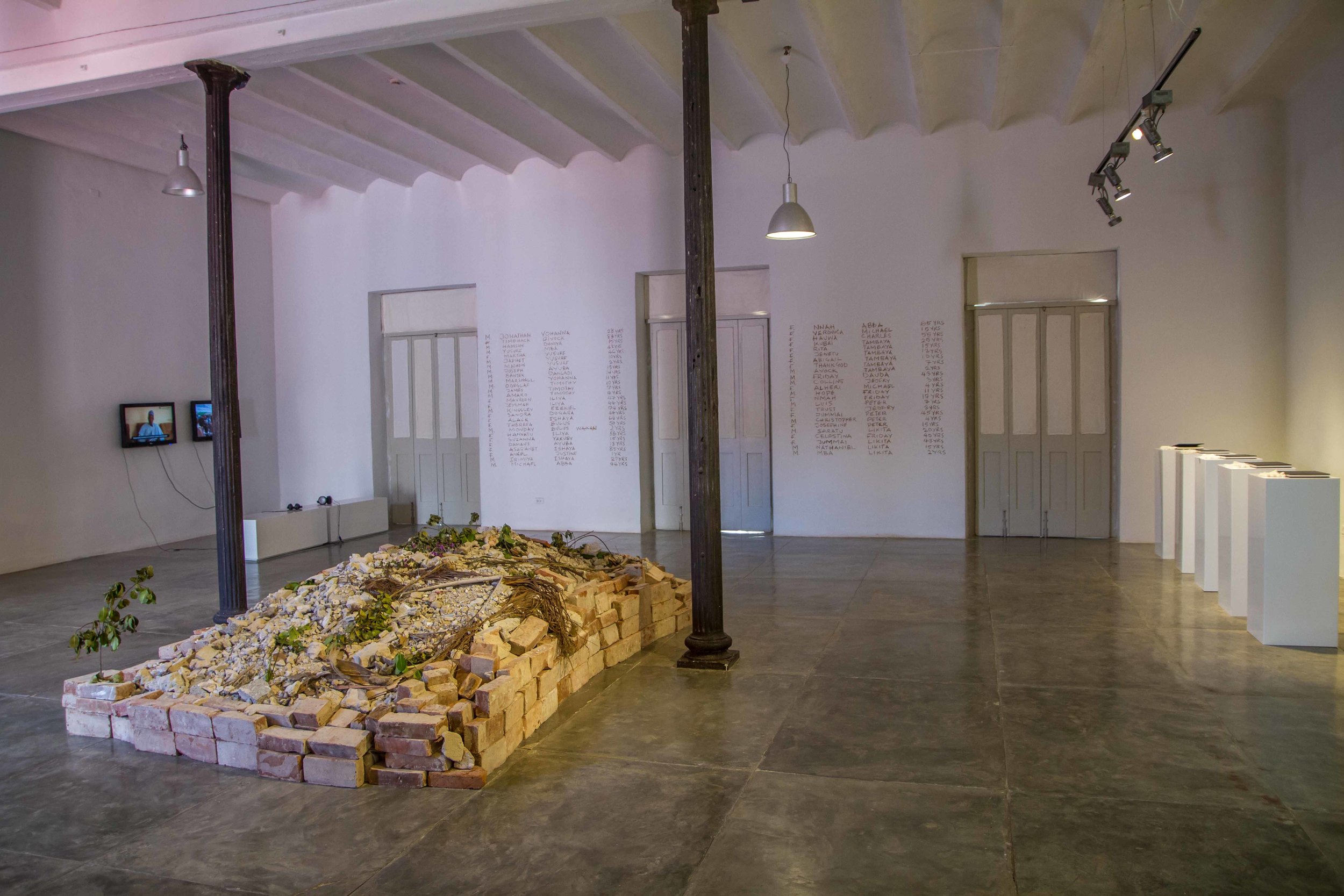








Southern Kaduna
part of Inside Out at Factoria Habana, for the 13th Havana Biennial, Cuba
Curators: Natalia Palombo and Isabel Moura Mendes
12 April - 30 August 2019
Inside Out is the first presentation of Ayọ̀ Akínwándé and Athi-Patra Ruga in Latin America. Encompassing sculpture, photography, video and sound, the work of two artists is brought into the same space and in dialogue with one another for the first time.
Akínwándé created new work in residence using research from an existing body of work, a long-term engagement with the crisis in Southern Kaduna, between nomadic cattle herders and farmers in host communities, which escalated across a number of states in the middle-belt region of Nigeria. The research methodology mirrors that of the wider curatorial framework and departs from the saying “Achio tu’wu wa liyen ufu dan tu’wu Ntiyong’ – which loosely translates as “a problem can only be known by the person affected” by the Takad people, one of the 50 cultural groups in the southern part of Kaduna state, Northern Nigeria.
Ruga exhibited an existing video work titled ‘Over The Rainbow' from the Queens in Exile series. This series centralises poignant themes of sexuality, dystopia and queerness, often framed within post-apartheid South Africa. The work embodies a very specific experience to explore colonial history, post-colonial present, and his personal experiences as a queer Xhosa man.
The exhibition strikes through particular external representations of a continent. The work opens up conversations about the politicisation of crisis in mainstream media by re-imagining history and the present in light of celebration and resilience. In centralising the nature of human-beings in crisis, the exhibition poses questions around authenticity and appropriation.
Artist Statement
I’m not a journalist, I’m not in search of the ‘truth’ – no one knows what that word means these days (the information age) and neither has it been the foundation of which this current world was built. While it is said that “history is written by the winners”, I will say that “truth resides with the losers”.
On 5th March 2016, about 500 people were said to have been killed when “killer herdsmen” attacked 10 communities in Agatu Local government in Benue State, Nigeria. While the official numbers were less, there were little to no coverage of the attacks in mainstream media and images and video footage shared on social media became the resource material in engaging the crisis. While I wasn’t able to gain access to Benue, I eventually got access to Southern Kaduna, where the crisis also affects farming communities. The crisis is often referred to as the “Farmers vs. Herdsmen” clashes and it has claimed the lives of thousands of Nigerians since 2014.
Through this installation I’m trying to create a visual language for the ‘truth’ - to tell the story of the crisis and the daily reality of the people most affected, the perpetrators unknown, the victims unheard. In this body of work, the mass grave is a space more alive than the cemetery. It acknowledges people whose breath was intercepted, people who are real witnesses, but can only testify in the afterlife. The mass graves in Southern Kaduna are becoming part of the landscape; they are on farmlands, in houses, in religious spaces.
On my second trip to the region, I was taken to a number of small graves. They are scattered across communities that have been attacked by “unknown gunmen” or “killer herders”, “armed bandits” or “terrorists” - depending on who is saying it. I was told to take photographs but I knew that I couldn’t. These graves don’t look like graves. The photographs will be seen as propaganda. There is an established aesthetic of what a grave look like, and the world we live in speaks in pictures. I observed these ‘graves’, mounds of earth with leaves placed on top. The contrast of the green leaves: a symbol of life, against the brownish ground: a symbol of death - is profound. Of course, in time, those people buried in the graves, on farmlands, will give life to those who will be born in the future.
I recall speaking with one of the chiefs in the village. I said to him “these people deserve befitting burials”. The chief explained, “we must bury them in the place they were killed. We believe that if we bury them in the traditional way, the circumstances will repeat itself”. You see, ‘belief’ is at the core of human existence, and it would be colonial to challenge that.
I wanted to “see” for myself. But ‘seeing’ is multi-layered. I have been preoccupied with ways of seeing this story - how do I present it, in what context do I frame my experience.
Nigeria is not at war. But thousands of its citizens have been killed in states like Borno, Yobe, Benue, Kaduna, Zamfara, Nasarawa, Plateau. These people are humans, their voices buried in graves - some marked, others unmarked, across the country. But what is war? Who defines it? Who labels it? War, crisis, conflict, dispute… Who even establishes the perpetrators? And who cares?
God bless the dead.
The exhibition is supported by Factoria Habana, Oficina del historiador de la Ciudad OHC, 500 Aniversario de La Habana, XIII Bienal de La Habana, Ministerio de Cultura República de Cuba, Consejo Nacional de las Artes Plásticas, Fundación Caguayo, Many Studios, Glasgow City Council International Office and Diversity Arts Forum.
Havana Biennial: April 12th – May 12th 2019
Exhibition open: April 12th at 11:30 am, closing August 30th 2019
Factoria Habana:
O ́Reilly 308 e/ Habana y Aguiar, La Habana Vieja. Cuba
+(053) 7 864 9518
factoria@patrimonio.ohc.cu